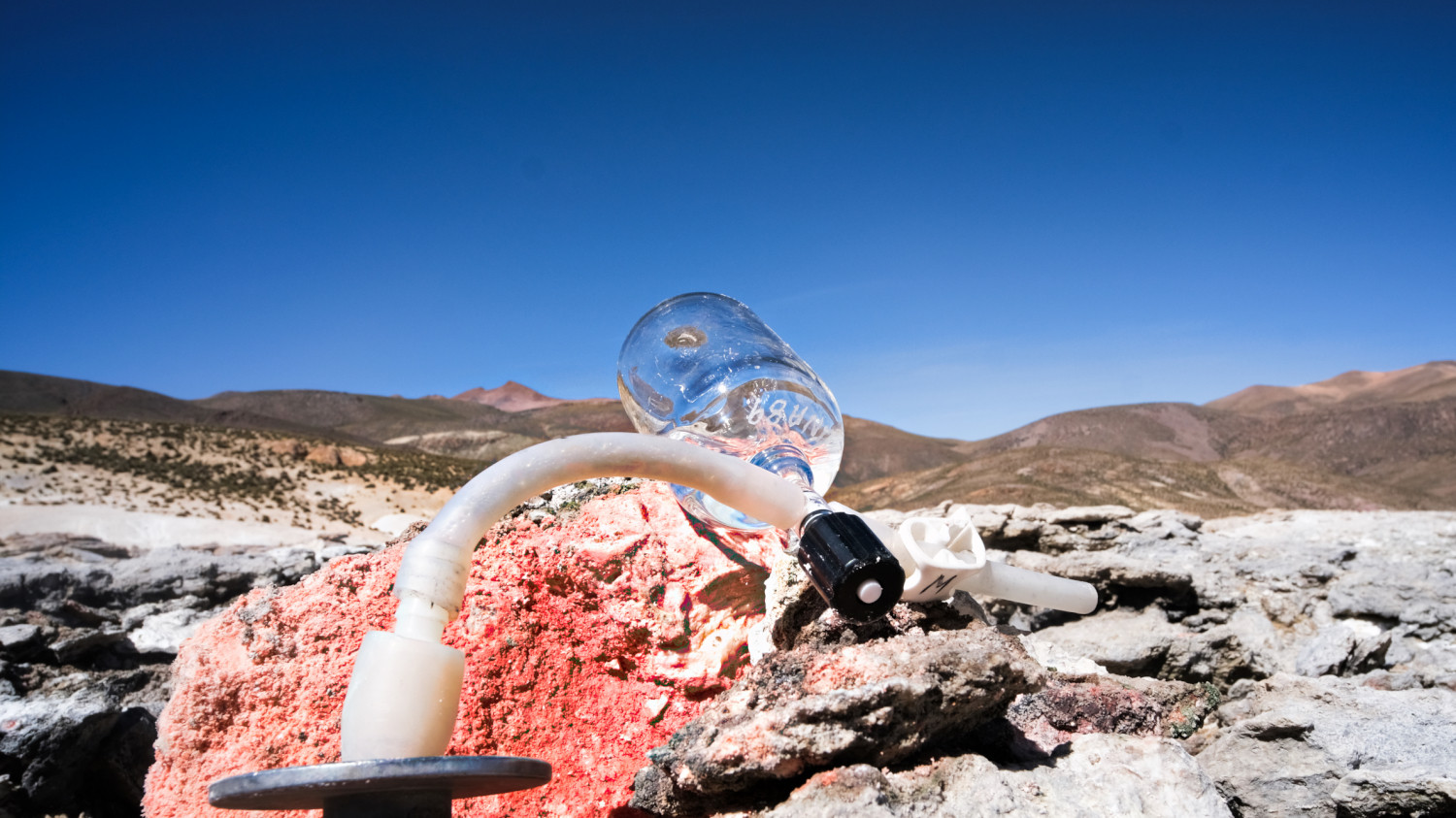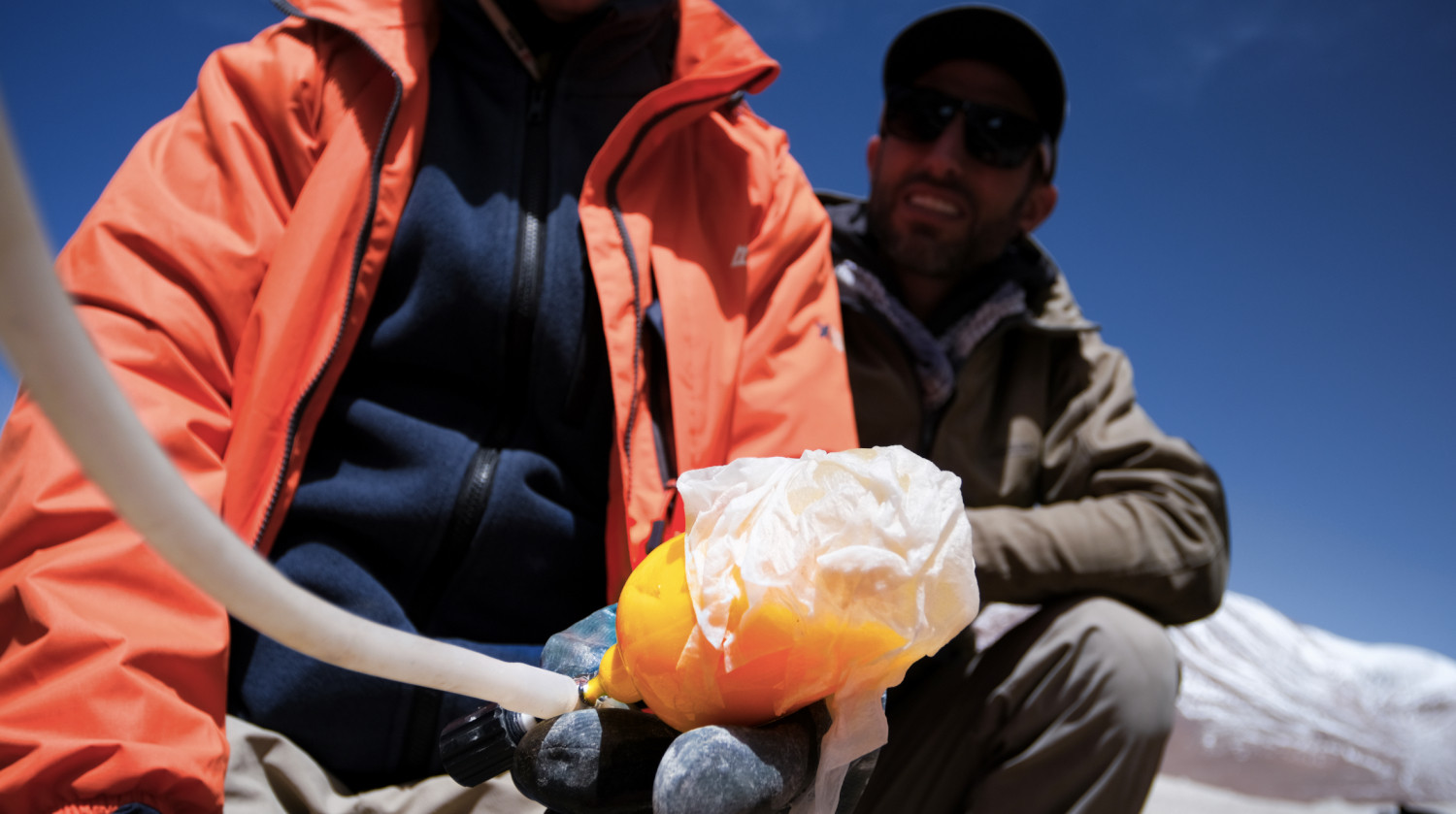2 min to read
Message in a bottle
The giggenbach bottles and how they help scientists collect gases in the field

The gases that envelop geologists, microbiologists and scientists on expedition are foggy, dense or inconsistent. They are so evanescent and yet so fundamental in understanding the processes happening in the Earth’s crust, or even beyond.
Gases, especially volcanic ones, often make sampling as fascinating as it is complex. Indeed, they reach high temperatures and consist of compounds of an acidic nature such as hydrochloric acid (HCl), sulfur dioxide (SO2), and hydrogen sulfide (H2S). Such characteristics make not only the conditions of the expeditions hostile thus forcing scientists to operate with extreme speed and efficiency, but also the sampling becomes tricky.

In fact, one of the main problems associated with gas sampling derives from the materials used for sampling. Often the collection tubes do not withstand the acidity and corrosiveness typical of some gases; hence the difficulty of sampling and the appearance of possible chemical interference. Further problems are related to the reaction of some species with each other and the detection of some minor species present in trace amounts.
Limiting such problems is possible thanks to the so-called giggenbach bottles. A giggenbach is a borosilicate-built glass bottle with a teflon stop valve (politetrafluoroetilene) filled with alkaline solution (e.g., sodium hydroxide, NaOH). It is usually connected to a titanium or silica tube (materials not prone to corrosion) that is inserted into the source of interest. The gases bubble inside the giggenbach thanks to a system of adjustable valves, condense and come into equilibrium with the solution inside the bottle, which will then act as a chemical “trap.”
What has been collected in the giggenbach bottle will provide valuable information. Indeed, the gases are the window through which scientists understand the past and present history of the place they are examining and, consequently, the ways in which the environment and life affect each other. The invention of giggenbach bottles has enabled a huge step forward in the study of volcanic gases and this is due to Werner Friedrich Giggenbach (1937–1997), a German geochemist, geologist and volcanologist who is considered one of the world’s leading scientists in the field of volcanic gases and magmatic and geothermal fluids. He therefore enabled the deciphering of the “secret message in the bottle.”
Fotos: Jacopo Pasotti, 2022
